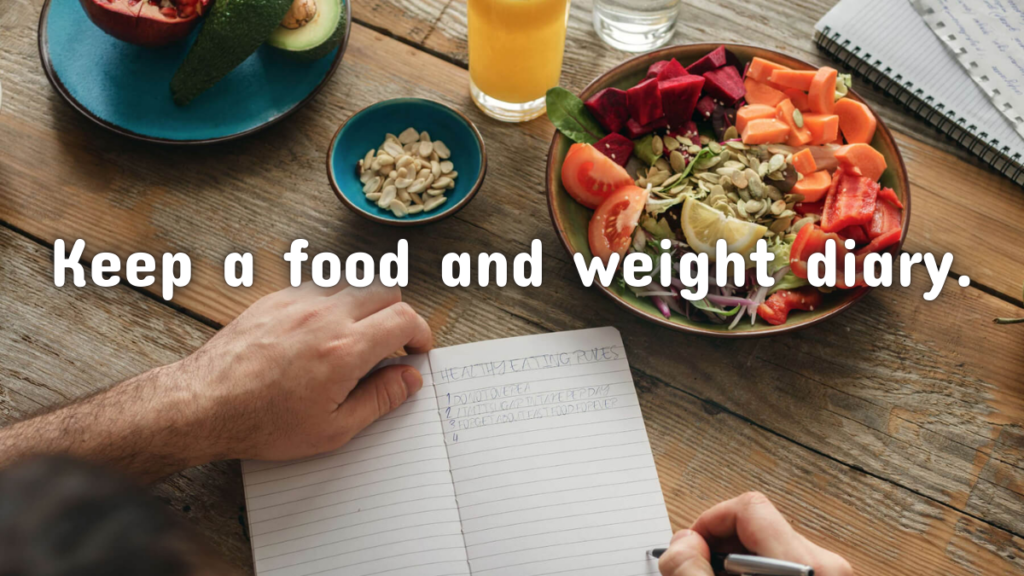Eat varied, colorful, and nutrient-rich foods.
Healthy meals and snacks need to shape the crux of human beings’ daily diets. For instance, consumption of end result and veggies at the side of each meal of entire grains and protein may want to quite without difficulty be summed up into announcing that the total fiber intake in step with the day should be approximately 25 to 30 grams.
All these can result in an entire prohibition of trans fat consumption in a weight loss plan and its delivery with saturated fats. Saturated fat consumption is then seen as a high hazard of having coronary heart situations.
In addition to the above, human beings will have around their kitchens unsaturated fat resources, each monounsaturated fatty acid and polyunsaturated fatty acid.
Certain nutrient-dense and healthy foods are
- Fresh vegetables and fruits
- Fish
- Legumes
- Nuts
- Seeds
- Whole grains, like brown rice and oatmeal
Certain foods must be restricted, including
- Foods with added oils, butter, and sugar
- Processed red or fatty meats
- Baked foods
- Processed foods lacking nutrients, like chips or cookies
At times, if one removes some foods from the diet, it may cause the body to be deficient in vital vitamins and minerals. In this situation, a registered dietitian (RDN) may be seen consulting on how to obtain the nutrients while losing weight.
Keep a food and weight diary.

Self-tracking can be beneficial in losing weight. Individuals are able to log all the foods they consume in a day with the help of a paper log, a cellular phone application, or an Internet site. In addition, individuals can track their weight changes per week.
Individuals who are able to monitor their little successes and see changes in their body are more likely to remain committed to a weight reduction program. Nonetheless, one must ensure that this behavior does not become an obsession or unhealthy for mental well-being.
Get regular physical activity and exercise.
Exercise on a regular basis is very vital for physical and mental well-being. Increasing the amount of physical activity and performing it in an organized manner is usually the solution to weight reduction.
The American Heart Association (AHA) suggests 150 minutes a week of moderate-intensity activity, like brisk walking.
Individuals who are not typically physically active can increase the level and intensity of activity progressively. It is the most stable method of ensuring regular exercise is established as a part of their life.
Similar to monitoring food, monitoring activity is also helpful for weight loss mentally. Individuals can gain similar advantages by monitoring physical activity, as they can be encouraged, held responsible, and gain confidence through observing the improvement in fitness.
If the idea of completing a full exercise routine seems overwhelming, one can begin exercising with the following activities in order to raise the exercise level:
- climbing stairs
- raking leaves
- walking the dog
- gardening
- dancing
- playing sports outdoors
- parking a car a distance from a building entrance
Someone with a low risk of coronary heart disease might not require a medical examination before they start exercise. Medical advice might still be desired by some individuals, for instance, those with diabetes. Anyone with doubts regarding a safe amount of exercise should call a health care provider.
Eliminate Liquid Calories
It is possible that you are drinking hundreds of daily calories from sugary teas, juices, sodas, or alcohol. They are referred to as “empty calories” since they add extra energy but no nutritional value.
If one doesn’t substitute smoothies for meals, then one can have water or unsweetened coffee and tea. Water can be flavored by adding lemon or orange juice.
Do not mistake thirst for hunger. It is possible for someone to satisfy hunger by drinking water between meals that have been scheduled.
Measure servings and control portions.
Any food, particularly food that is calorie-rich, in excess contributes to weight increase.
For individuals who have no access to measuring tools or simply do not want to use them, estimating portions is a practical and useful method to do so.
To aid you in estimating food portion sizes accurately, here are some comparisons of sizes:
- A fistful of vegetables and fruits is roughly 1 cup.
- A tennis ball measures roughly ½ cup of grains like pasta or rice.
- The thickness of a deck of playing cards measures roughly three ounces of meat or meat substitute.
- A thumb-size is about 1 tablespoon, and this will suffice for any nut butter, olive oil, or salad dressing.
These quantities are not specific, but they may be used while measuring gadgets are not accessible.
Eat mindfully.

Mindful eating can be of use to many people, meaning taking full account of why, how, when, where, and what they are eating.
One can turn out to be more aware of one’s body’s wishes and thereby select more healthy meals.
Individuals who devour mindfully consume meals slowly and experience the flavor in order that they grow to be satisfied. Consuming a meal for 20 minutes gives the frame enough time to system satiety cues.
The key is to turn out to be satisfied after a meal, as opposed to full, and to keep in mind that many “all-natural” or low-fat ingredients are not constantly healthy.
Motivation and cue control
There are so many environmental and social triggers for cravings. For example, some people snack more when they watch TV, and others conflict to get beyond a bowl of dessert being handed to another man or woman without grabbing an element for themselves.
By knowing what is triggering excessive snacking, people can begin to regulate their behavior to cut down on those triggers.
Plan ahead
Developing a meal plan with nutrient-dense foods can make a contribution to stepped-forward weight loss. Preparing earlier, like washing and peeling vegetables and fruits, also can help in making healthier food choices.
Reduce the range of relatively processed snacks and chocolates you have at home and maintain the elements necessary to prepare short, nutrient-dense meals. This can reduce senseless eating and make healthful selections less complicated.
Planning social events or restaurant meals ahead of time can make this even easier.
Get social support
Having the aid of your family may be a key element of your eating regimen.
Some may want others to join them, such as friends or family, while others use social media to show their results.
Other sources of social support include
- Positive social networks
- Group or individual counseling
- Peer or exercise clubs
- Work employee assistance programs
Stay positive
Weight loss is a gradual process, and when someone isn’t losing weight at the predicted rate, they’ll get discouraged.
Losing or preserving weight
FAQs
What are the basics of a healthy, weight-loss-friendly diet?
Include colorful fruits, vegetables, whole grains, lean proteins, and healthy fats; avoid processed foods, sugars, and trans fats.
Why is tracking food and weight important for weight loss?
It increases awareness, accountability, and helps identify habits that need improvement, encouraging consistency and progress over time.
How much exercise is recommended for effective weight loss?
Aim for 150 minutes of moderate-intensity exercise weekly, such as brisk walking, plus strength training at least twice a week.


